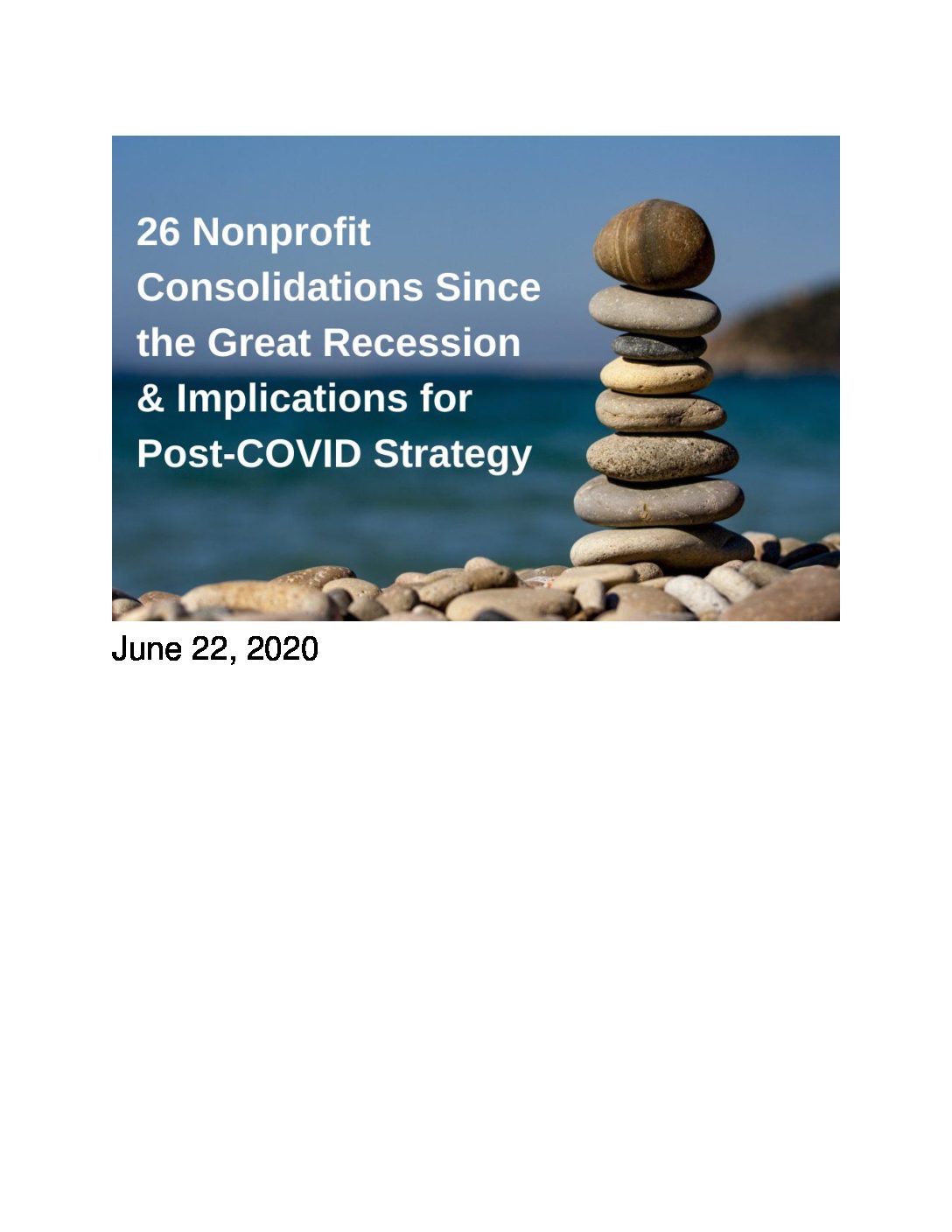26 Nonprofit Consolidations Since the Great Recession & Implications for Post-COVID Strategy
During the past decade, Glick Davis & Associates has worked to support nonprofit organizations facing dire questions of viability, and supported dozens of mergers and partnerships.1 Many organizations that we work with are faced with the stresses of day- to-day operations and do not have the bandwidth to look very far into the future.
Fast forward to January 2020: the emergency of the COVID-19 pandemic, sectors of the economy in freefall, increased health and human service needs, and a projected impact to nonprofit organizations unprecedented in modern times. Issues of financial solvency, a dramatic need for compassionate civic care, and a social safety net have all peaked at the same time. It is with this context in mind that we prepared this white paper to address some of the critical needs, conceptions, and misconceptions nonprofits now face in this historic crisis. Case examples and data are drawn from Glick Davis & Associates’ past decade of merger and partnership engagements and is intended to serve three purposes:
- Outline step by step processes and benefits for partnerships and mergers, and what factors should motivate a nonprofit to explore these options.
- Address three common misconceptions about nonprofit mergers that we observe repeatedly.
- Promote data-driven analysis based in real-life case examples rather than organizational theory or data drawn from private sector mergers and consolidations.We believe that these lessons and data apply across the nonprofit sector, regardless of sub-sector. Our work spans sectors including the arts, human services, youth development, health care, poverty alleviation, environment, sports, faith-community, and many others. Prior to COVID-19, partnerships and mergers may have been more readily top-of-mind in the human services sector; post-COVID-19, all sub-sectors will face the same challenge: Is my business model able to survive?Without clear and comprehensive discussion about this question by civic leaders, boards of directors, government and philanthropic funders, and communities themselves — rebuilding communities, many of whom are reliant on the fabric of the nonprofit sector to help make them complete — will range from challenging to impossible. Therefore, the recessionary lessons from post-2008 survival are even more urgent for today’s post-COVID recession.
Did you find this useful?
Get notified when more great resources are published on glickdavis.com!
